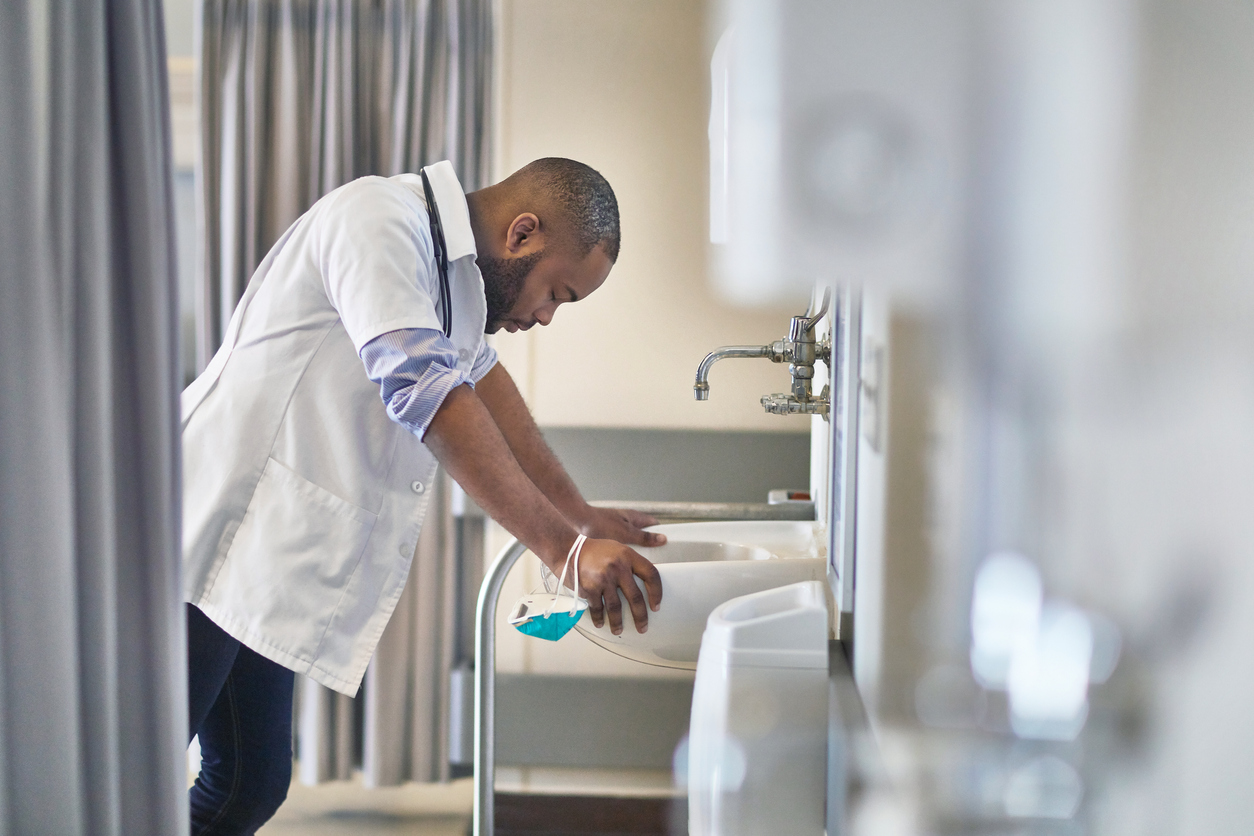
A career in healthcare can have many stressful moments. Some healthcare professionals must deal with stress on a daily – even hourly -- basis. Yet students in healthcare programs get very little experience in dealing with career stressors.
When new graduates enter the “real world” of healthcare, many of them are initially shocked by the intensity of their jobs and situations they find themselves in. Demands are fast-paced and job tasks can be physically and psychologically intense. The stress that people incur in the field can cause damaging effects, including high rates of turnover, to themselves and their patients.
Some level of pressure or tension is needed in order to perform optimally; however, when those levels become too high for a person’s coping abilities, they experience a decrease in performance. When people are confronted with a stressful situation, intellectually they may know the proper steps to take, but struggle to perform because they are psychologically overwhelmed. This can cause an array of problems for the patient and the caregiver. The physiological effects of stress have been extensively researched, and as a result, educators are learning more about the impact of stress on performance, which can make people shut down.
Stress Inoculation Training
Stress Inoculation Training (SIT) is an educational method intended to help prepare people for stressful situations in advance, so when the real situation arises, the initial shock and pressure do not overwhelm them. Initially pioneered in such high-stress professions as the military and law enforcement, the technique is gaining more widespread use in healthcare today.
The effects of stress on a person’s performance under tension-filled conditions can include:
- Panic
- Losing focus
- Becoming paralyzed and freezing up
- Over the long term, suffering career burn out
Much like a vaccine, in SIT, students are exposed to controlled, safe, stressful situations, and inoculated, so to speak. This exposure increases their tolerance to stress over time. The idea of training students in a stressful environment is to teach them their body’s reaction to stress and how they can combat and mitigate it. By recognizing when they are beginning to be stressed, they can learn techniques to counteract the impact of tension and remain calm in the field.
SIT in Simulation Education
Practicing Stress Inoculation Training in simulation scenarios and classroom environments desensitizes students to some of the pressures they will experience in the field. Through this education, people learn what triggers their stress responses and how their body feels under duress. SIT allows students to practice different techniques to battle their stress, and ultimately improve their performance under pressure. Many programs currently have capstone complex multi-patient scenarios that immerse students in a higher-challenge level. Students must react appropriately at these moments, prioritize, delegate, and think critically.
Practically, simulation designers may ask how to dial up stress strategically in scenarios. One of the simplest ways to accomplish this objective is to increase the workload expected during a simulation. Using technology can help instructors and students in this area. One common technique is to recreate the auditory environment of an emergency department or hospital room by using heart tones, alarms, and call bells. These sounds can be stressful in and of themselves and can be used to increase distractions in a scenario.
Multi-patient exercises require a higher level of coordination and planning than one-on-one caregiver-patient scenarios. Scenario objective identification is the first place to start in developing these experiences. Working closely with the technical team to recreate increased loads on communication, monitoring, and physiology transmission ahead of time, and rehearsing sequences ensure a safe environment for the learner.
It is critical to calibrate the pressure during a scenario and monitor the stress experienced by students so that they are not overwhelmed. Debriefing becomes ever more critical for helping process the experience, practice coping techniques in action, and encode valuable lesson and a sense of accomplishment as having mastered a tough environment.
SIT is an additional tool at educators’ disposal to help students prepare for the real world and work in healthcare careers that will only see grow in importance. Planned training that gets done under stress is an effective way to create intensity and realistic simulations.
This is a guest post by Greg Vis, BS, EMT-P is the developer of the SimVS simulation platform application. Greg has worked in simulation for close to 20 years and has been involved in all aspects of the field from training, to research and product development.







